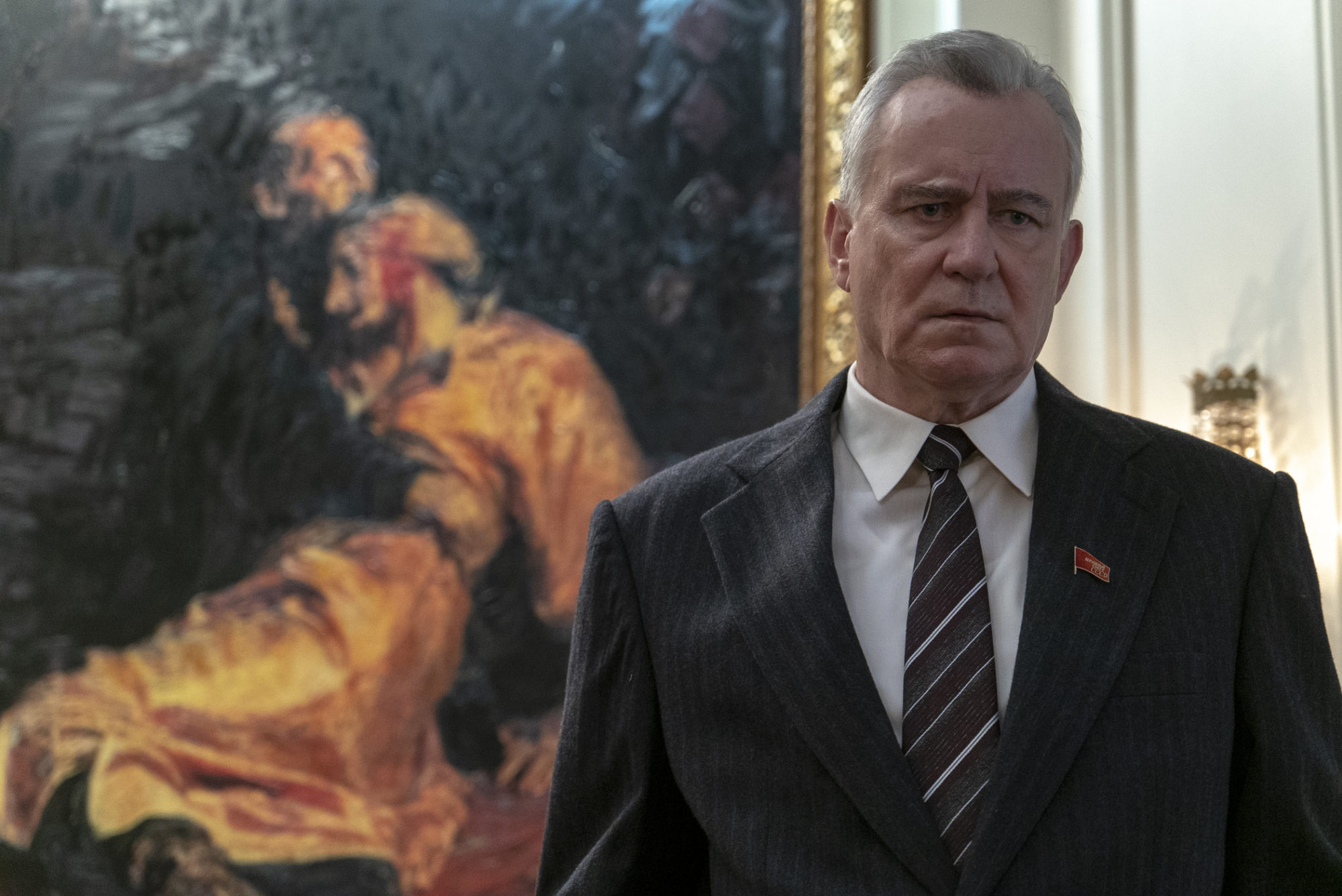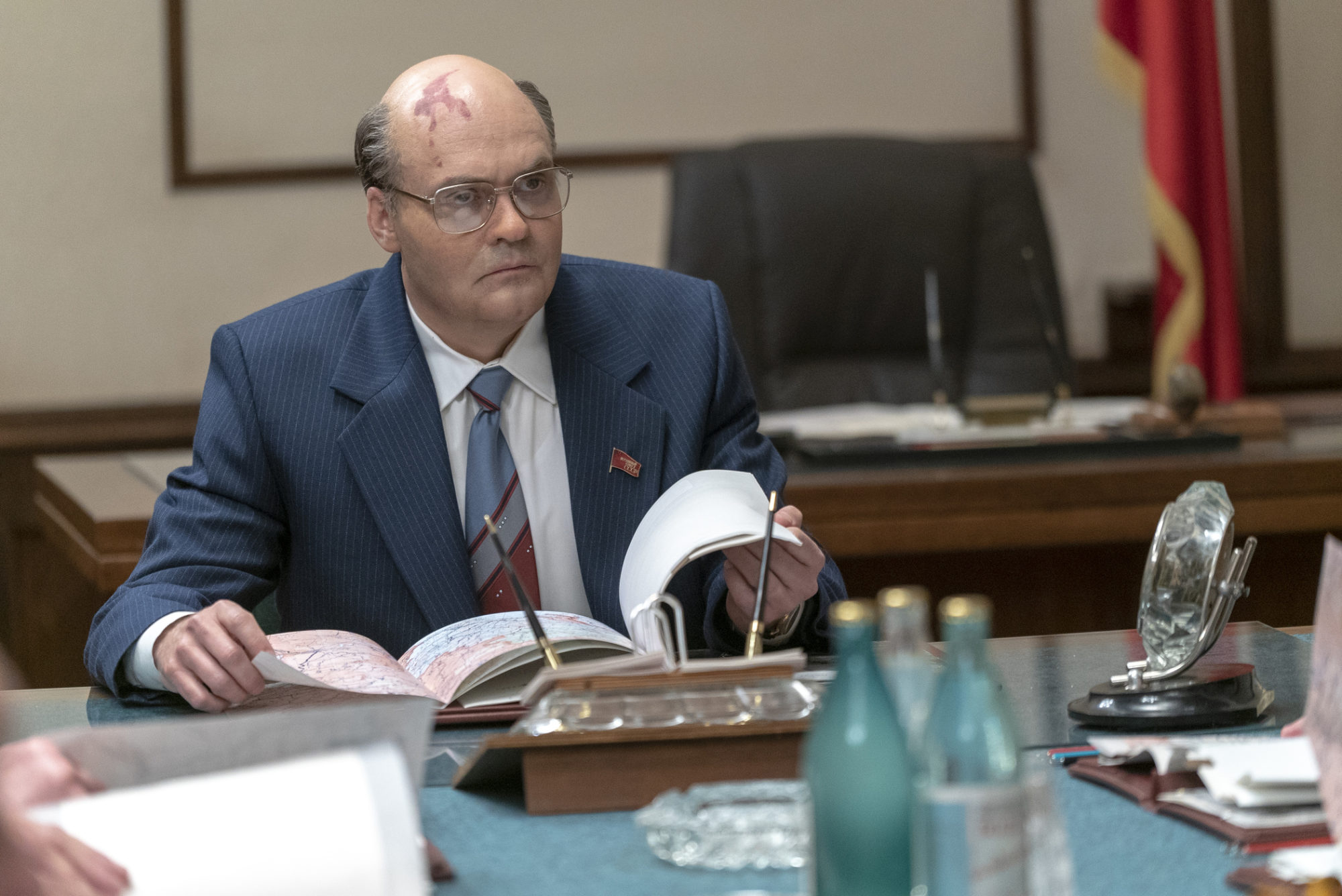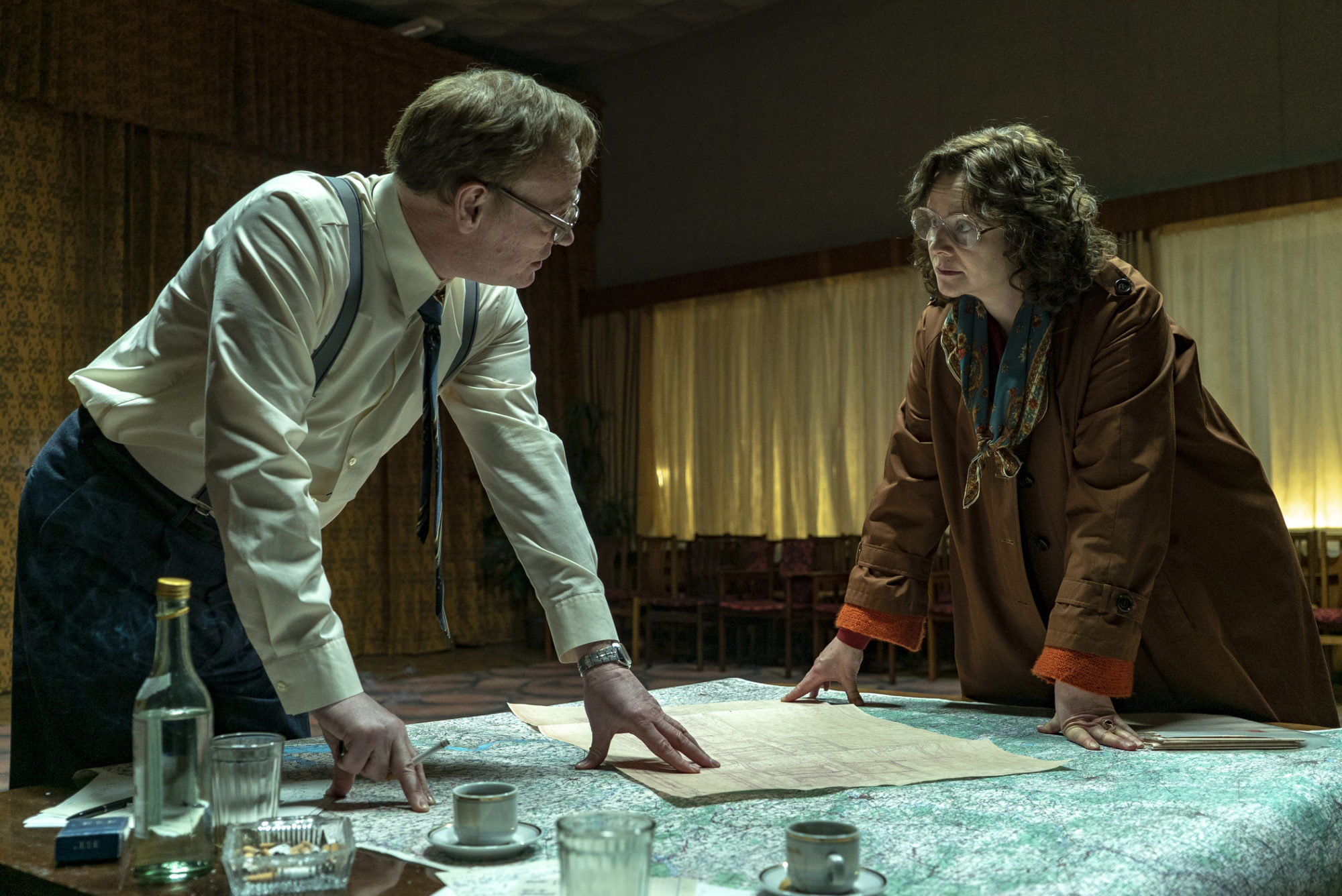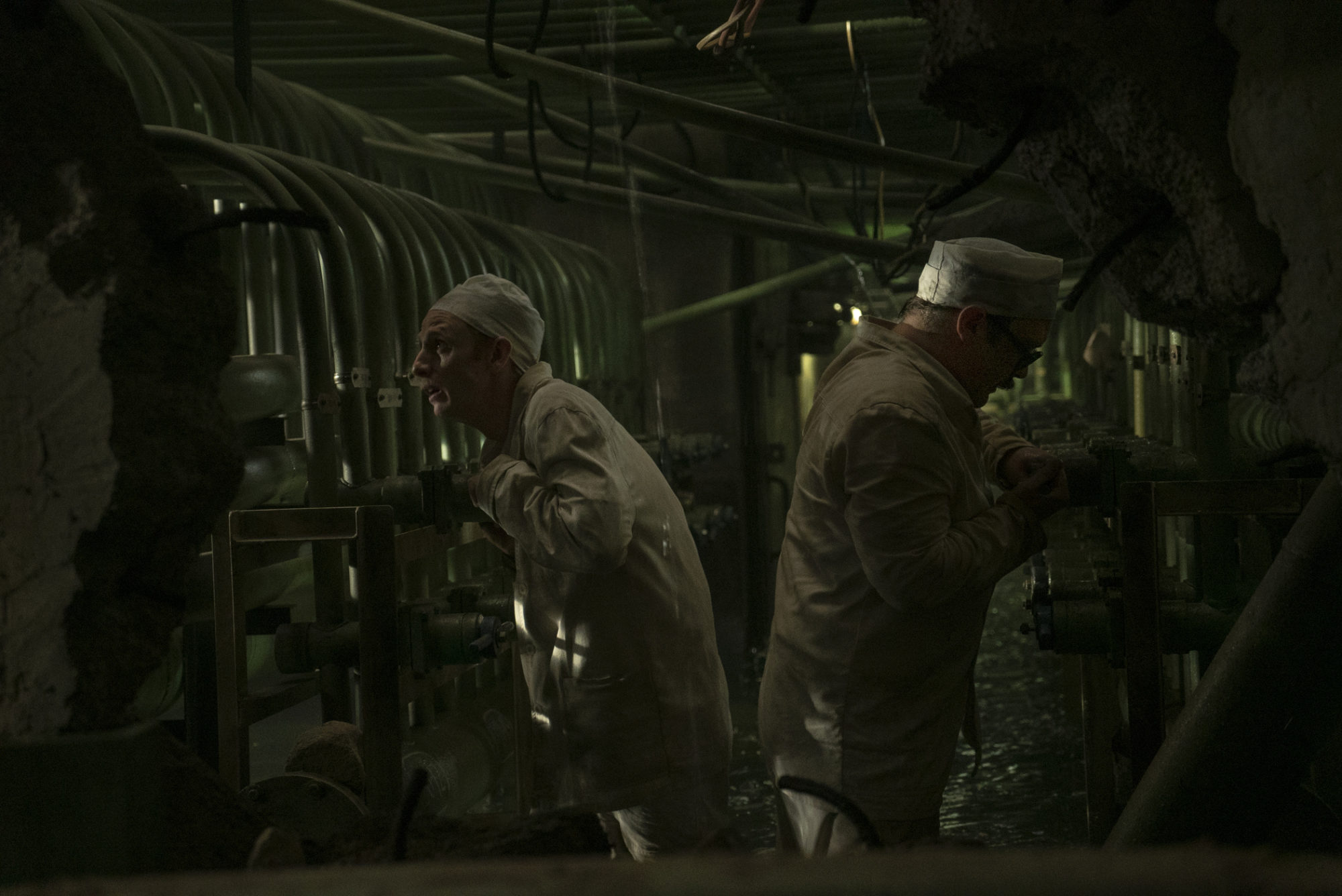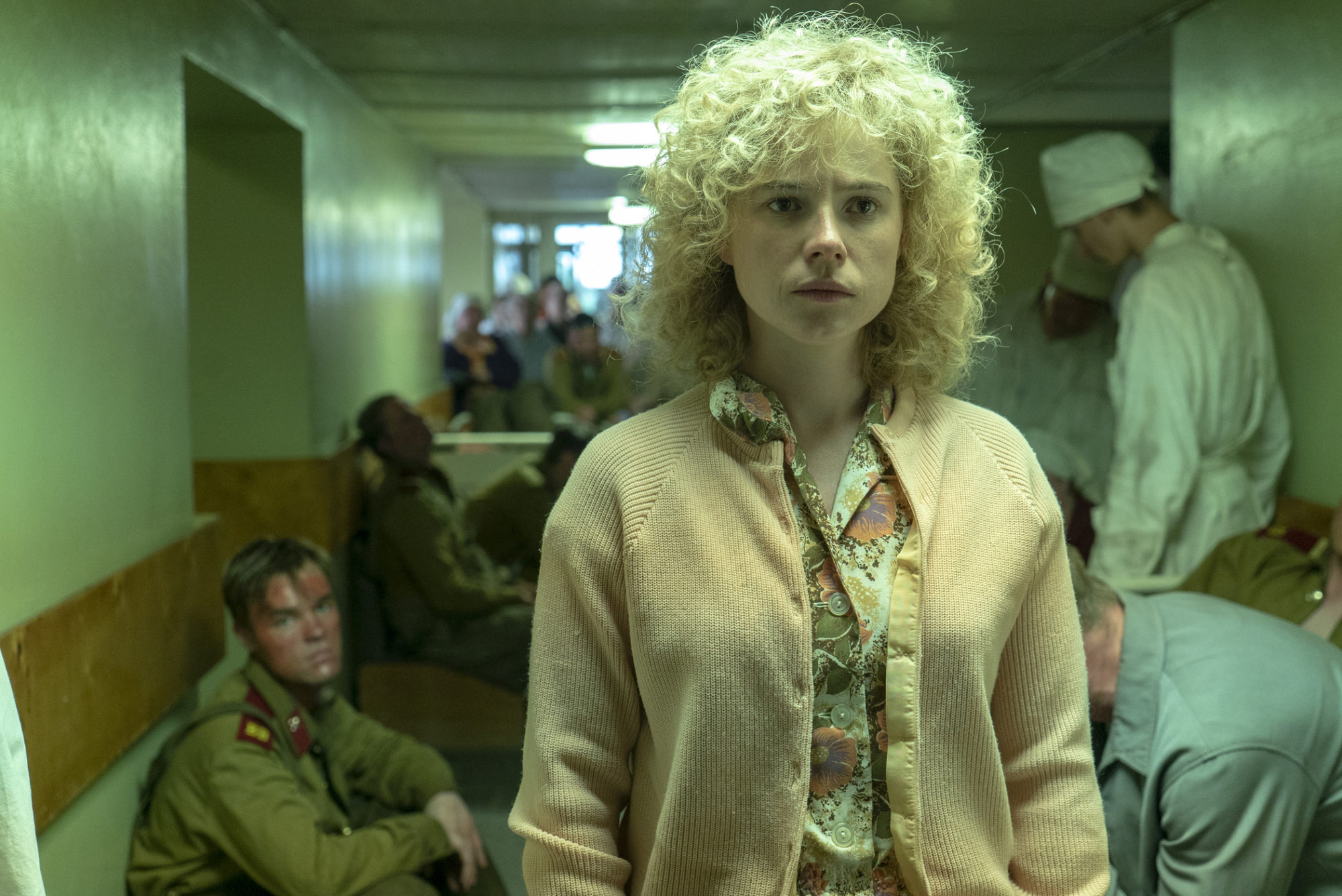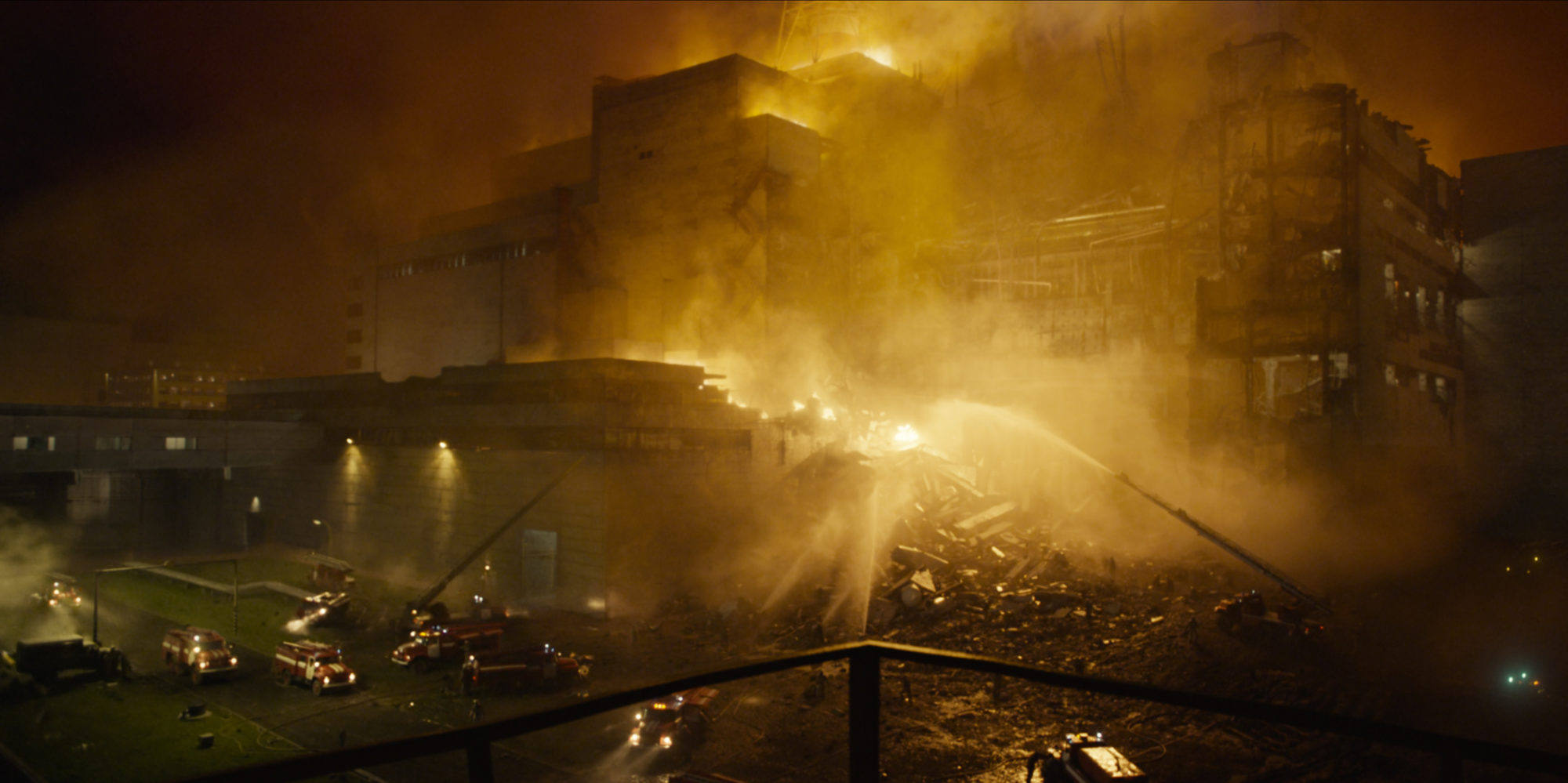
Chernobyl, 2019 [photo credit: Liam Daniel/HBO; courtesy of HBO]
Chernobyl
Share:
“What is the cost of lies?”
HBO’s miniseries Chernobyl opens with this dark rumination of dying Soviet chemist Valery Legasav’s. Played by actor Jared Harris, Legasav reflects in 1988 on the two previous years. The show then jumps back to April 26, 1986, when the disaster at the Chernobyl Nuclear Power Plant caused thousands of deaths, displacements, long-term environmental degradation, and, by some accounts, the beginning of the fall of the Soviet Union.
The show does a fantastic job of portraying the initial confusion, panic, and chaos that occurred in the hours and days following the explosion at the plant. An ill-informed and ill-prepared fire brigade shows up to extinguish the initial blaze and soon falls sick with radiation poisoning. Distraught scientists are brushed aside by government officials until the catastrophe reaches the eyes and ears of the international press and can no longer be concealed. The evacuation of Pripyat, the town nearest the reactor, is delayed thanks to government hesitation to admit state error, resulting in casualties. Birds fall out of the sky. Babies mutate inside the womb.
This Chernobyl is a dramatization, not a documentary. Despite the depicted scientists’ frequent assertion of facts, viewers should resist the urge to fact-check. Chernobyl is a high-intensity, high-budget, fictionalized account, made for fans of Breaking Bad and The Americans. And like all film and television series focused on nuclear disaster, it’s also a thinly veiled fable-like retelling of a well-circulated cautionary tale. To understand exactly what Chernobyl is propagating, it’s important to acknowledge the Western lens through which the series is presented.
Chernobyl is a Western-made series with Western actors for a Western audience. It’s impossible to ignore the awkwardness of a miniseries about a Soviet-era disaster cast almost entirely with British and American actors (who, to their credit, do not attempt to fake accents). It’s also written and produced by an American, Craig Mazin, known for such hits as The Hangover Part III and The Huntsman: Winter’s War (Mazin’s name entered the news cycle a few years back, after he enthralled the Internet with his hilarious and bizarre accounts of his time as roommate to Ted Cruz, whom he openly detests).
Stellan Skarsgard with Ilya Repin’s Ivan the Terrible with His Son Ivan; Chernobyl, 2019 [photo credit: Liam Daniel/HBO; courtesy of HBO]
David Dencik, Chernobyl, 2019 [photo credit: Liam Daniel/HBO; courtesy of HBO]
With this lens in mind, the show can be seen as a critique of current right-leaning Western politics, particularly when it comes to a lack of state transparency, the devaluation and suppression of science, and the rise of “alternative facts.” Again and again, the series reiterates the importance of finding and telling the truth, no matter how unbelievable or difficult to face. Several scenes involve Harris or Emily Watson (who plays a kind of catch-all representative for the scientific community) insisting on the severity of the explosion and resulting radiation, and party officials (actor David Dencik even portrays Gorbachev in a few scenes) denying the facts of the situation. The miniseries’ spotlight on scientists as the true (tragic?) heroes of the Chernobyl accident is evidenced by this exchange in episode three between Harris and Watson:
“You’re compelled—the problem has been assigned and you’ll stop at nothing until you find an answer, because that is who you are.”
“A lunatic, then”
[rueful stare]
“A scientist.”
Of course, the series indicts the Soviet Union, not the United States, for such hubris, obsession with international state-controlled PR, and lack of transparency to its citizens about the true cost of radiation poisoning. But it’s not difficult to apply those same criticisms to current political and social situations in the US. The heavy emphasis on the difference between truth and lies, fact and fiction, conjures climate change deniers, the infamous phrase “alternative facts,” and the popularized notion that we live in a “post-truth” society.
Jared Harris, Emily Watson, Chernobyl, 2019 [photo credit: Liam Daniel/HBO; courtesy of HBO]
There has not been a nuclear accident like Chernobyl in the United States, but there have been, and continue to be, incidents involving government secrecy and reticence resulting directly in civilian death. The most obvious and recent example might be the Flint, Michigan water crisis, in which 100,000 residents have been, and continue to be, exposed to elevated lead levels in their drinking water. As with Chernobyl, the exact death count of the Flint water crisis is debated but is often thought to be higher than initially reported. There are many, many other examples of poor government policy and transparency (often combined with racism, classism, or both) resulting in social and environmental crises in the United States.
Chernobyl’s tone is that of a parable—a warning of what could happen again if we’re not careful. Despite the relevant political tilt and the British accents, the series doesn’t let you forget for a minute that the Chernobyl disaster happened in the Soviet Union. The actors constantly call each other “comrade,” and every other wall has a portrait of Lenin or Stalin, or both. There’s a slight implication these disasters don’t happen in the West, only that they could if we continue down a certain path.
When considered as a straight-up, bingeable television drama, Chernobyl is quite good. Mazin and director Johan Renck (perhaps best known for his music videos) have created a riveting, heart-pounding dramatization of the events directly before, during, and after the reactor core explosion of the Chernobyl nuclear power reactor. The initial episode is a standout, taking the viewer minute by minute through the harrowing first night and morning. A young firefighter, Vasily Ignatenko, and his pregnant wife, Lyudmilla Ignatenko (played by Adam Nagaitis and Jessie Buckley, respectively) take on the roles of the viewpoint characters—their pain is your pain. Harris, and his party leader partner-in-crime Stellan Skarsgård, take the lead as stone-faced Doomed Men desperately trying to get the situation under control, all while horrifyingly aware of their own impending deaths.
Many of the best scenes and episodes focus on those who did the dirtiest, most dangerous work—the coal miners digging around the clock to prevent a complete nuclear meltdown, the nurses at the hospitals suddenly overrun by patients, a small crew tasked with shooting all the animals in the evacuation zone post-disaster (this tale is from episode four; avoid if triggered by deaths of small, cute pets). A particularly astonishing scene consists of one long, anxiety-inducing shot of the workers who cleaned the radioactive debris off a roof where they could work for only 90 seconds at a time so as to avoid rapid death by radiation poisoning.
Chernobyl, 2019 [photo credit: Liam Daniel/HBO; courtesy of HBO]
Jessie Buckley, Chernobyl, 2019 [photo credit: Liam Daniel/HBO; courtesy of HBO]
The previously mentioned conversation between Harris and Watson, in which they reckon with their identities as scientists, occurs in episode three, titled “Open Wide, O Earth.” This notable episode, set in the weeks after the explosion, is grotesque. Firefighters and plant workers meet painful deaths as the extreme radiation of the explosion takes its toll (twice the radiation level of the bomb at Hiroshima, we’re told several times by Harris over the course of the series). It’s a horrid, bloody, unavoidable death—seemingly by rotting—heightened in drama to a practically biblical level. Therefore, it’s not surprising one of the few works of art in the whole series shows up in this episode—Ilya Repin’s Ivan the Terrible and His Son Ivan on 16 November 1581.
The symbolism isn’t subtle—the large painting is seen for the first time after a particularly gruesome scene. Harris, waiting to report on the status of the reactor post-explosion, is considering the painting, which hangs at the end of a lavish government building hallway. The painting depicts the moments after Ivan the Terrible strikes his son in anger—a fatal blow. The Tsar, instantly remorseful, holds his dying, bloodied son. Like the Chernobyl disaster, the moment depicted in the painting looms as a key turning point for Russia. Shortly after Ivan’s son’s death, the country plunged into a deeply unstable period known as the Time of Troubles.
It is unlikely Repin’s work ever hung in a government building (it is currently on view at Tretyakov Gallery in Moscow, where it has been since its completion in 1885), thanks to its controversial content. Nationalists dispute the historical accuracy of the story, and they have argued the violent depiction is inaccurate and offensive to Russian history. The painting has been attacked twice—first, in 1913, via knife; and again, in 2018, when a visitor felt compelled the smash the painting with a metal pole taken from a security stanchion. Although Repin’s work is generally considered to be some of the greatest in Russian history, the narrative in Ivan runs contrary to the entire political belief system under the Soviet Union. The painting’s appearance in Chernobyl is as an allegory for state accountability in the face of regrettable, unintended violent death, but also as an indicator of the fall of the Soviet Union. Chernobyl was the beginning of the end.
The painting’s unlikely appearance also exemplifies the show’s slick dramatization. Although filmed primarily in Lithuania, at the end of the day, this is Hollywood. It’s not the untold story of Chernobyl (plenty of existing books on the topic tell quite a lot), but it is certainly a riveting one. The final episode of the series ends with a trial—the way such stories often do, as governments and the general populace look for someone or something to blame—and an unexpected moment of redemptive truth telling. It’s a fabricated catharsis, a conclusion to a catastrophe that will not fully conclude in our lifetime. Chernobyl gets an ending. Chernobyl does not.
This review originally appeared in ART PAPERS “Energy Structures” Spring/Summer 2019.
EC Flamming is the Circulation & Editorial Coordinator for Art Papers. She lives in Atlanta. She subscribes to The New Yorker, Film Comment, Playboy, and People.
